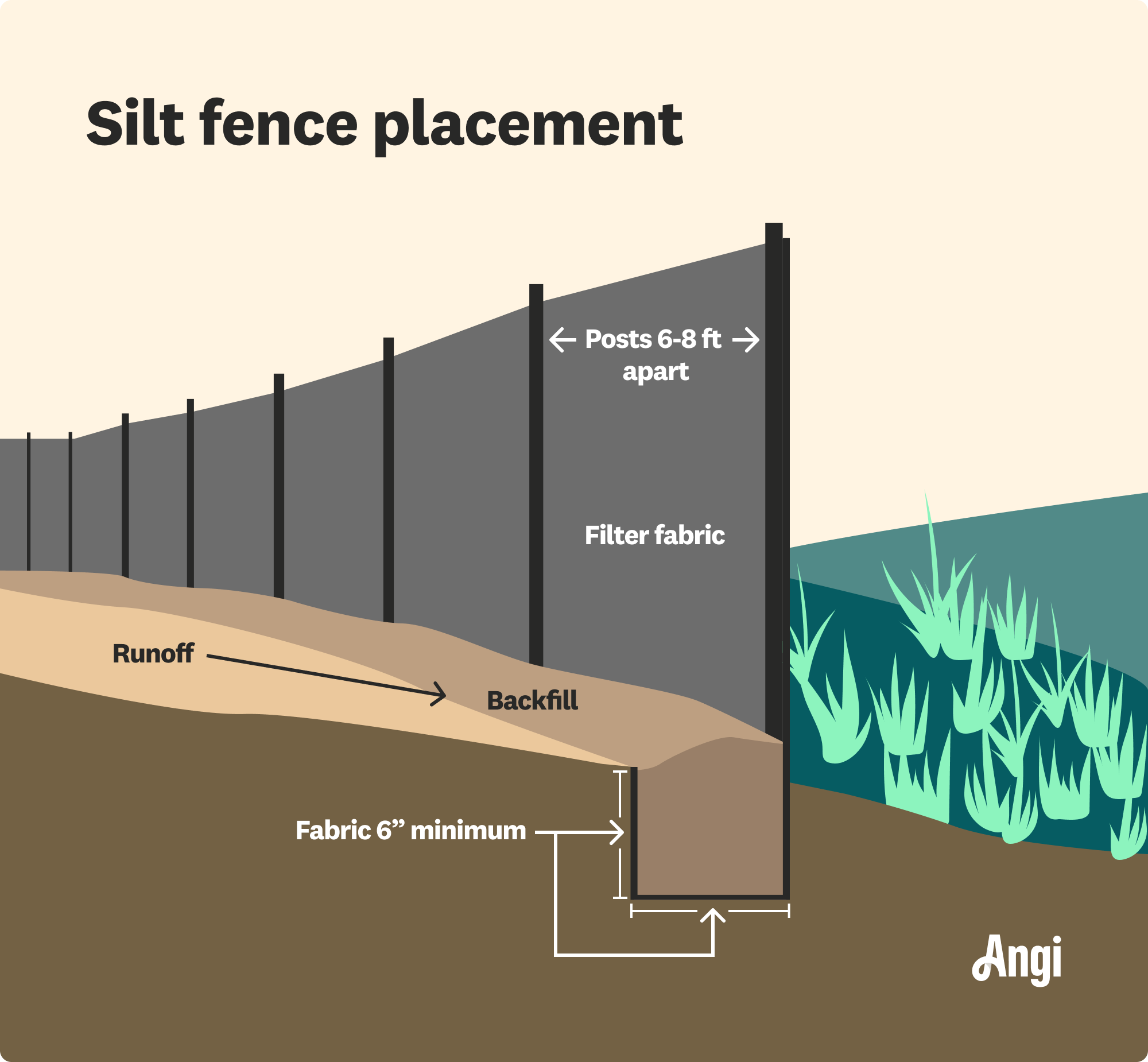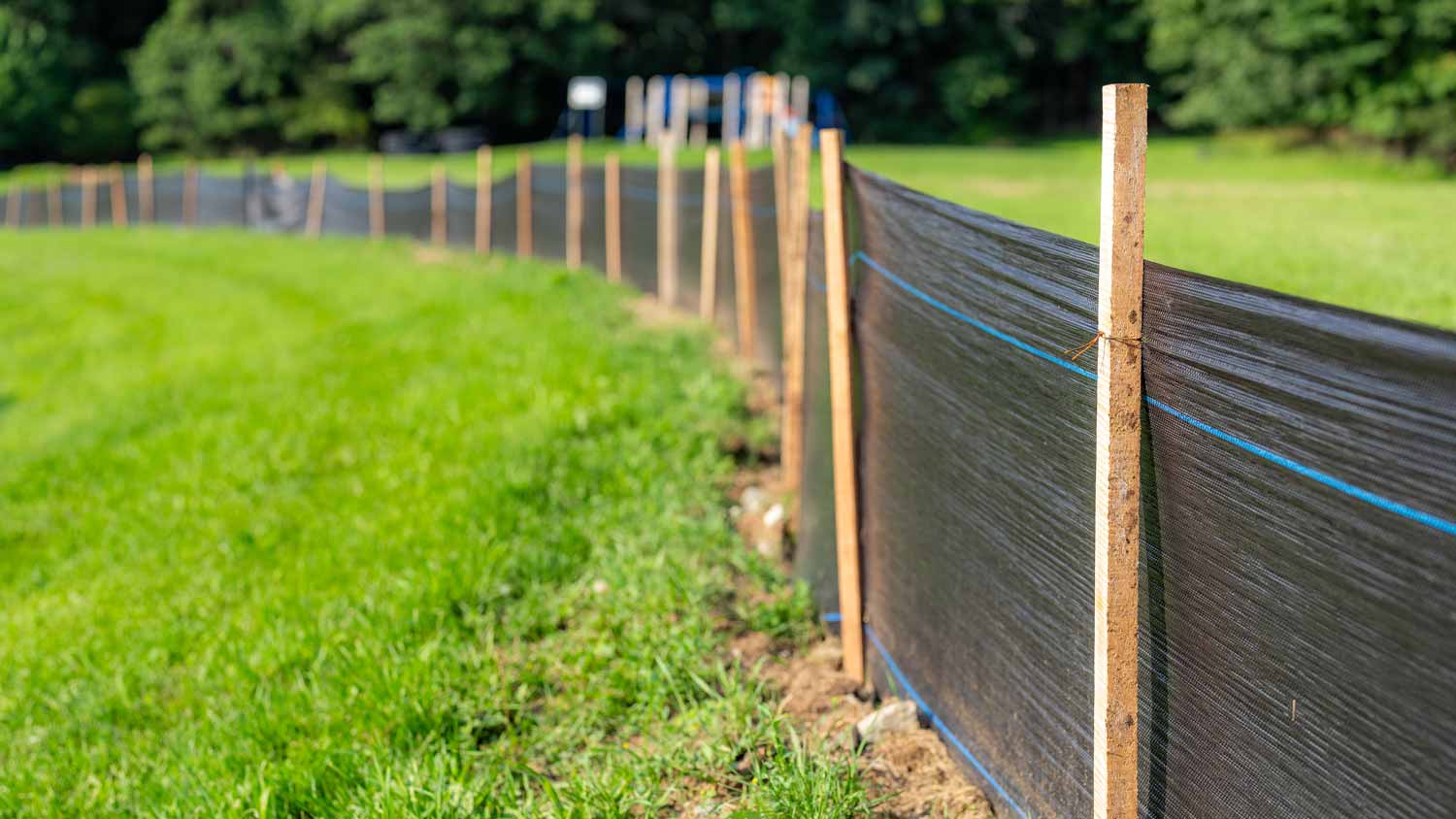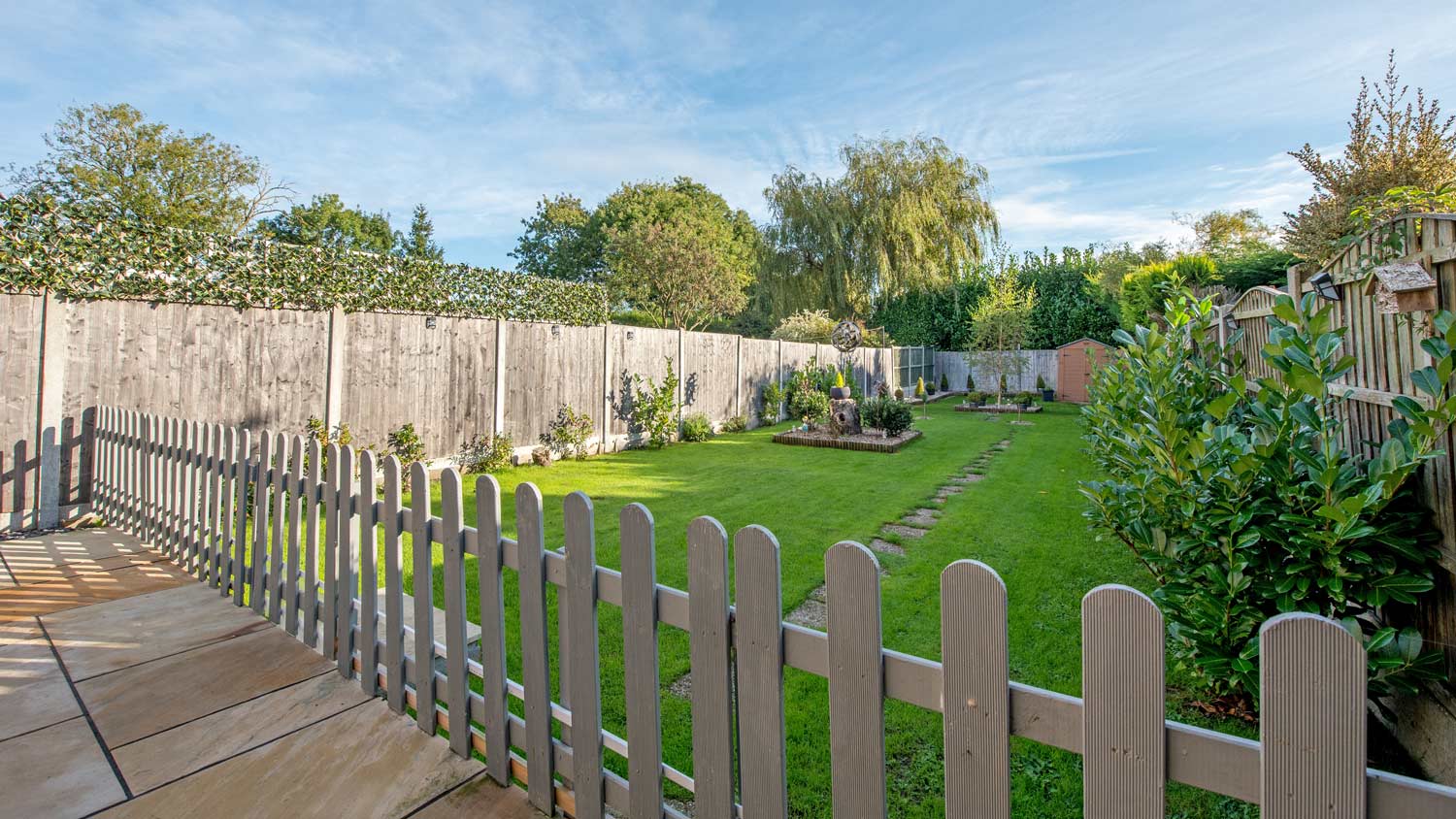What Is a Silt Fence and Why Do You Need One?
This protective measure is essential for your construction site


Silt fencing provides a temporary barrier to stop erosion during construction.
Many jurisdictions require silt fencing for home builds and other projects.
A silt fence consists of porous fabric stretched between wooden stakes.
Silt fence installation requires specific experience and is usually handled by pros.
You should check a silt fence weekly and take steps to maintain its integrity as needed.
You've probably seen silt fencing before when driving past construction sites. It consists of short fabric barriers, typically black or dark gray, that run along a site’s perimeter and slopes. Silt fences are crucial for new home builds and are often required by local building codes. Let’s break down what silt fences are for and how you might need to use them in your projects.
What Is a Silt Fence?
Silt fencing, or sediment fencing, is a temporary fence meant to control erosion at construction sites. Building a home or other structure involves a lot of digging and soil movement, and silt fences are designed to allow rainwater to flow through while preventing that soil from winding up in the street or local water supplies.
A silt fence consists of porous geotextile fabric stretched between wooden stakes, which hold the fabric in place. Occasionally, builders place wire mesh behind the fabric as a reinforcement. They’ll also dig trenches to bury these materials to a certain depth, providing stability for the fence.
Silt fence installation occurs at angles along slopes, at the bases of slopes, and around the perimeter of a work site as a final barrier.

How Much Does a Silt Fence Cost?

How much you pay for a silt fence depends on the type of materials required by your local building codes and the length of the fence you need for your construction site. You may pay under $1,300 for a complete 300-foot silt fence kit, or you can find individual 50-foot rolls of geotextile fabric for less than $15 each. Basic wooden stakes tend to cost about $2 each.
Labor is another factor that will influence the cost. Hiring a pro to build a fence can cost $50 an hour in addition to materials, or it may be included in the cost of your larger project. Check with your contractor before construction begins.
Regardless of the prices you encounter, a silt fence is worth the cost. Failure to adhere to building codes could land you with a hefty fine.
Can You Install a Silt Fence Yourself?
If you're already well-versed in erosion control and landscaping, you can learn how to install a silt fence. Following all local regulations, look for a good set of instructions, and follow government-issued silt fence best practices. You may wish to hire a local excavator to dig your trenches, as this step is crucial and otherwise involves a lot of time and strenuous manual labor.
If you’re not experienced, this isn't the project to experiment with. Silt fence construction needs to follow specific guidelines. Otherwise, you could be held liable for environmental damage or messes caused by erosion from your site. Talk to your contractor or consult a fence installer near you to have a silt fence built properly at your construction site.
Silt Fence Maintenance
The maximum life span of an erosion control silt fence is about six months, but you should still check on it weekly and after every heavy rainfall to ensure it keeps its integrity. Each time you check your silt fence, take the following maintenance steps as needed:
Remove sediment buildup of more than six inches
Repair or replace torn, clogged, or loose fabric
Repair or replace unstable or broken posts
Stabilize any areas that aren't securely in the ground
Once construction is complete and permanent vegetation has been established on the slope, it’s safe to remove your silt fence and regrade the trench area.















